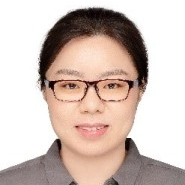Deep Learning-Based Computer Vision: Technologies and Applications
A special issue of Electronics (ISSN 2079-9292). This special issue belongs to the section "Artificial Intelligence".
Deadline for manuscript submissions: closed (31 December 2023) | Viewed by 8895
Special Issue Editors
Interests: image/video restoration; image/video coding; machine learning; image segmentation
Special Issues, Collections and Topics in MDPI journals
Interests: computer vision; deep learning; image processing; RGB-D perception; 3D reconstruction
Special Issue Information
Dear Colleagues,
Whether based on machine learning or signal-processing methods, computer vision enables computers to process, analyze, and understand visual data from the world around us, improving its efficiency and accuracy in many applications. We can observe that computer vision has become increasingly important in a variety of fields, with uses in areas ranging from autonomous vehicles and surveillance systems to medical imaging and augmented reality. In recent years, deep learning has further revolutionized the field of computer vision, bringing about tremendous advances in many tasks and surpassing traditional computer vision techniques by generating state-of-the-art results. Therefore, studying the deep learning-based computer vision technologies and their applications is particularly important.
This Special Issue aims to present a comprehensive overview of the advances in deep learning for both low-level and high-level computer vision technologies and their applications. We believe that this Issue will be of interest to researchers who are working in the area of computer vision and deep learning.
We are pleased to invite you to present original high-quality research articles. In addition, review papers that overview the state-of-the-art in deep learning for computer vision and identify important research directions for the future are also welcome. Research areas may include (but are not limited to) the following: deep learning; computer vision; object detection; image classification; semantic segmentation; image generation; pose estimation; image reconstruction; image/video restoration; image/video enhancement; etc. We look forward to receiving your contributions.
Dr. Chao Ren
Dr. Yuanzhouhan Cao
Dr. Tao Li
Guest Editors
Manuscript Submission Information
Manuscripts should be submitted online at www.mdpi.com by registering and logging in to this website. Once you are registered, click here to go to the submission form. Manuscripts can be submitted until the deadline. All submissions that pass pre-check are peer-reviewed. Accepted papers will be published continuously in the journal (as soon as accepted) and will be listed together on the special issue website. Research articles, review articles as well as short communications are invited. For planned papers, a title and short abstract (about 100 words) can be sent to the Editorial Office for announcement on this website.
Submitted manuscripts should not have been published previously, nor be under consideration for publication elsewhere (except conference proceedings papers). All manuscripts are thoroughly refereed through a single-blind peer-review process. A guide for authors and other relevant information for submission of manuscripts is available on the Instructions for Authors page. Electronics is an international peer-reviewed open access semimonthly journal published by MDPI.
Please visit the Instructions for Authors page before submitting a manuscript. The Article Processing Charge (APC) for publication in this open access journal is 2400 CHF (Swiss Francs). Submitted papers should be well formatted and use good English. Authors may use MDPI's English editing service prior to publication or during author revisions.
Keywords
- deep learning
- computer vision
- object detection
- image classification
- semantic segmentation
- image generation
- pose estimation
- image reconstruction
- image/video restoration
- image/video enhancement







